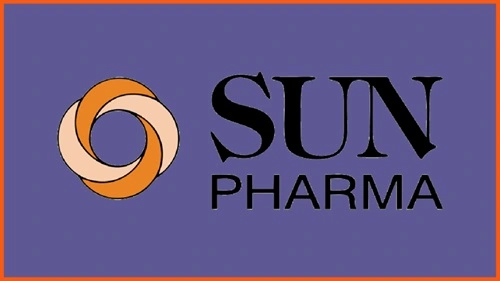Sun Pharmaceutical Industries Ltd. (Sun Pharma) is India’s largest and one of the world’s leading generic pharmaceutical companies. Established in 1983, Sun Pharma has grown through strategic acquisitions and by focusing on providing high-quality medications in over 150 countries. Known for its strong presence in the US and India, the company specializes in generic medicines, active pharmaceutical ingredients (APIs), and specialty pharmaceuticals. This SWOT analysis will provide insights into Sun Pharma’s strengths, weaknesses, opportunities, and threats in 2024, along with an overview of its current status and future plans.

Sun Pharma Current Overview:
Sun Pharma continues to lead in the global pharmaceutical market, with its major revenue streams coming from generics, specialty drugs, and APIs. The company’s performance has been buoyed by its wide product portfolio, particularly in therapeutic areas like oncology, cardiology, neurology, and dermatology. In FY2023, Sun Pharma generated substantial revenue, with key contributions from the US and Indian markets, although it faces growing challenges in regulatory compliance and increasing competition.
Sun Pharma’s financial strength and strategic acquisitions, such as its purchase of Taro Pharmaceuticals, have bolstered its global footprint. Specialty drugs, such as Ilumya for treating psoriasis, are expected to play a significant role in the company’s future growth.
Strengths:
1. Global Presence: Sun Pharma has a strong market presence in India, the US, and several emerging markets, contributing to its stability and growth.
2. Diverse Product Portfolio: The company offers a wide range of pharmaceutical products, including generics, APIs, and specialty drugs, allowing it to cater to various therapeutic needs.
3. Strong R&D Capabilities: Sun Pharma is known for its focus on research and development, investing around 6.5% of its revenue in innovative treatments, particularly in niche therapeutic areas.
4. Robust Sales and Marketing: With over 12,000 employees in its sales force, Sun Pharma has an efficient team to promote its specialty and generic products across different markets.
5. Acquisitions and Strategic Partnerships: The company has successfully acquired several firms, including Taro Pharmaceuticals, which has enhanced its market share and product offerings.
Weaknesses:
1. Regulatory Challenges: Sun Pharma has faced significant regulatory issues, particularly with the US Food and Drug Administration (FDA). Its Halol plant has been under scrutiny, affecting its reputation and profitability.
2. High Debt Levels: Sun Pharma’s debt burden has limited its financial flexibility, restricting its ability to invest in new ventures and growth strategies.
3. Limited Presence in European Markets: Despite its strong global presence, Sun Pharma has not fully capitalized on the European market, which offers significant growth potential.
Opportunities:
1. Expansion in Emerging Markets: The rising demand for pharmaceutical products in regions like Southeast Asia, Africa, and Latin America presents a major opportunity for Sun Pharma. Tailoring products to meet local healthcare needs could drive substantial revenue growth.
2. Growth in Specialty Pharmaceuticals: The demand for specialty drugs that treat complex diseases is on the rise. Sun Pharma can leverage its R&D capabilities to develop innovative treatments in this high-margin sector.
3. Collaborations and Partnerships: Collaborating with other research institutions or pharmaceutical firms can help Sun Pharma accelerate the development of new treatments, expand its product portfolio, and enhance its global reach.
Threats:
1. Intense Competition: Sun Pharma faces stiff competition in both the generic and specialty pharmaceutical sectors from global players such as Cipla, Dr. Reddy’s Laboratories, and Lupin. This competition pressures pricing and market share.
2. Patent Expirations and Legal Challenges: The expiration of key patents and the risk of legal disputes, particularly in the US, pose a significant threat to Sun Pharma’s revenue and profitability.
3. Regulatory and Compliance Issues: With stringent regulations in global markets, especially in the US and Europe, non-compliance could lead to product recalls, fines, and damage to Sun Pharma’s reputation.
Future Plans of Sun Pharma
Sun Pharma’s future growth strategy revolves around expanding its specialty product portfolio and strengthening its presence in emerging markets. The company aims to further invest in R&D, focusing on high-growth therapeutic areas such as oncology, dermatology, and neurology. Additionally, the company plans to enhance its API production to reduce dependence on third-party suppliers and support global supply chain demands.
In 2024 and beyond, Sun Pharma is also focusing on entering more niche segments, including gene therapy and biosimilars, which are expected to drive future growth. The company is well-positioned to capitalize on the increasing demand for chronic disease treatments, particularly in developing markets
Conclusion:
Sun Pharma remains a dominant player in the global pharmaceutical industry, with its strengths lying in its diverse portfolio, strong R&D, and strategic acquisitions. However, the company faces several challenges, including regulatory hurdles, high competition, and patent expirations. To maintain its leadership position, Sun Pharma must focus on expanding into new markets, enhancing its specialty drug offerings, and ensuring compliance with global regulatory standards. With the right strategies, Sun Pharma has the potential to continue its robust growth in the coming years.